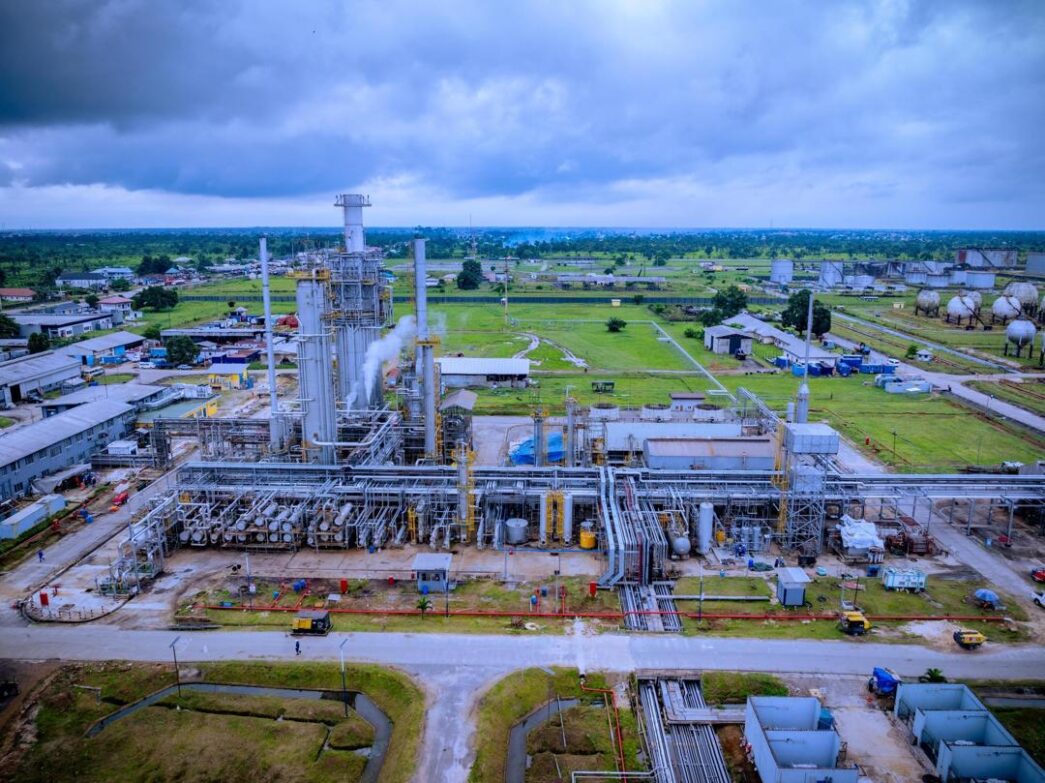On November 26, the old Port Harcourt refinery commenced crude oil processing and also began the loading of petroleum products for trucks after years of being moribund.
The NNPC said the petroleum products loaded from the refinery’s gantry were premium motor spirit (PMS), also called petrol; automotive gas oil (AGO), otherwise called diesel, and kerosene.
The NNPC also disclosed that the refinery began daily production of straight-run petrol (naphtha), which is blended into 1.4 million litres of petrol.
The national oil firm said the refinery incorporates crack C5, a blending component from Indorama Petrochemicals — its sister company — to produce “gasoline that meets required specifications”.
Advertisement
This has raised questions as to why the Port Harcourt refinery is blending for petrol when it should be refining crude.
‘PH REFINERY’S CRACKING UNIT NOT WORKING’
Speaking to TheCable, Joe Nwakwue, former president of the Society of Petroleum Engineers (SPE), said blending is “nothing strange” to refineries.
Advertisement
Nwakwue said the cracking unit of the refinery “is not operational” hence the production of naphtha, which needs to be blended to specification.
He said “refineries blend products to achieve specific requirements”.
On the blending component of the refinery, Nwakwue said crack C5 is a product of hydrocarbon cracking that is typically used to blend petrol to achieve the required octane rating.
On the current production capacity of the refinery, he said the plant “has only a crude distillation unit (CDU) and catalytic reforming unit (CRU)”.
Advertisement
“It is not a high complexity refinery and the crack spread would not be great, meaning it will produce more of low-value products like low pour fuel oil (LPFO) and automotive gas oil (AGO),” he said.
‘BLENDING NOT AN UNCOMMON PRACTICE IN REFINERIES’
On his part, Wumi Iledare, a professor of petroleum economics, said naphtha is used to achieve the grade specified to meet regulatory requirements.
Explaining the rationale for blending, the professor said “if the complexity rating of the old refinery is short of the required octane rating, blending enhances the quality”.
Advertisement
“Of course, it is not an uncommon practice in refineries,” he said.
“It is a refinery but naphtha just happens to be an input required in addition to the crude oil, electricity, and other inputs to meet the required products.”
Advertisement
Iledare said the utilisation rate for optimal production at refineries is “90-95 percent to make economic sense but it would take several calendar days to reach that goal”.
He, however, said optimisation is a “one day at a time” approach.
Advertisement
‘BLENDING MUST MEET ACCEPTABLE STANDARDS’
For the refinery to be economically viable, Iledare said there must have been favourable economic indicators “such as payback period (PBP), good enough earning power and profitability indicators in favour of the rehabilitation process”.
Advertisement
Also speaking, Jide Pratt, an oil executive, said while “it is not illegal to blend”, the outcome must be tested to meet acceptable standards of the Nigerian Midstream and Downstream Petroleum Regulatory Agency (NMDPRA).
Pratt said although the Port Harcourt refinery has come on stream, it “may not be able to refine to best quality and profit, based on the age and as such is using the Indorama plant to achieve a blend”.
“The capacity of the refinery, in terms of production, may be suboptimal based on the age of the plant,” he added.
“This is why blending for price and efficiency is the way the refinery is going”.
The NNPC did not respond to enquiries seeking in-depth clarification on the workings of the refinery.
TheCable had reported that the national oil company was considering retrofitting the refinery into a blending plant — but the NNPC denied having such plans.
HOW IS BLENDING DIFFERENT FROM REFINING?
Crude oil refining is the process of transforming crude oil into various usable petroleum products such as diesel, petrol, and kerosene.
On the other hand, blending combines different types of crude oil to create a blend that meets specific product requirements.
An oil blending plant has no refining capability but can be used to blend re-refined oil (a used motor oil that has been treated to remove dirt, fuel, and water) with additives to create finished lubricant products.
Add a comment












